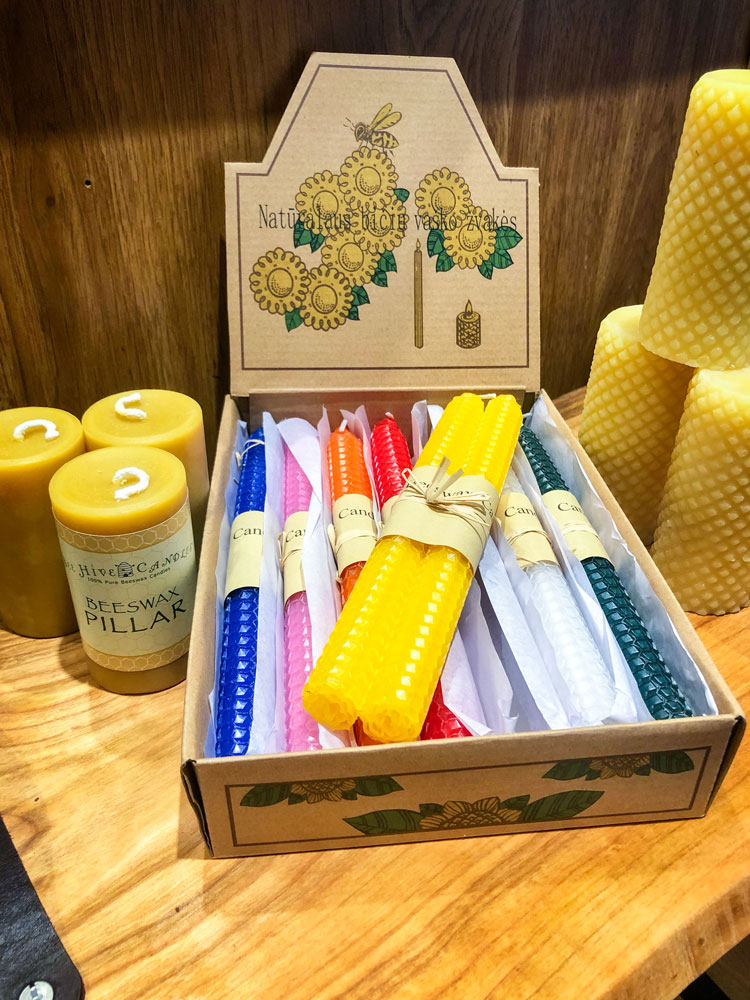What’s in your candle?
Article and photo by Lisa Nicklanovich

These 100% beeswax candles are appealing for the nontoxic wax and naturally sweet fragrance from the honey they are made with.
Whether it is taper candles, pillar candles, a candle in a jar or tea lights, who doesn’t love lighting a candle and enjoying the flame, a sense of calm and one’s favorite scent? It seems simple that a candle is made with just an ignitable wick, wax, and possibly a scent, but what those three parts are comprised of can make a huge difference in air quality, health, burn time, and price.
Candles with 100% beeswax are naturally produced by bees and are a by-product of honey. They clean the air and reduce indoor pollutants, effectively reducing asthma, allergies and hay fever. Look for the key phrase “100% beeswax” on candles, not “pure” which means only 51% of an ingredient. Beeswax is the oldest known ingredient in candle making history.
Beeswax candles have a naturally sweet fragrance from the honey and burn brighter than other candles. Candles with 100% beeswax contain the highest melting point of all the waxes, resulting in a very long burn time which helps offset the significantly higher cost.
Coconut-based candles are another natural option and they are typically less expensive than 100% beeswax candles. Paraffin can be mixed with soy or coconut to keep prices down, so be sure to check the label.
Paraffin wax candles are the most common and least expensive candles on the market, mainly because the wax is derived from petroleum. Like most petroleum products, paraffin is not clean-burning nor biodegradable in the environment. Candles made from paraffin are suspected to release toxic chemicals with color and fragrance adding more toxins. To date, the research is inconclusive about the health risks of burning paraffin candles, but choosing candles from companies that are transparent about their ingredients is probably best.
A Castle Pines resident shared that her daughter’s asthma symptoms were worsened when she burned paraffin candles. She switched to 100% beeswax candles and immediately noticed an improvement in her daughter’s symptoms.
Although wicks made with lead were banned in the U.S. in 2003, some imported candle wicks may still be made with lead. Look for 100% cotton wicks.
Light a candle for National Candle Day on December 4 and Worldwide Candle Day on December 13, knowing what it is made of. Also, make sure to trim candle wicks to a quarter of an inch or less, use them in a well-ventilated area and always follow good fire safety practices.